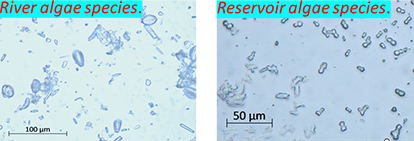Details
- Close date
- No date set
- Academic background
- Sciences
- Host campus
- Dunedin
- Qualification
- Master's, PhD
- Department
- Geology
- Supervisor
- Dr Candace Martin, Professor Claudine Stirling, Dr Evelyn Armstrong , Dr Alex McAlpine
Overview
Waters draining the mineralised Hyde-Macraes Shear Zone of the Otago Shist contain variable levels of dissolved arsenic that present a potential risk to livestock and human drinking water supplies. A pilot study in the upper Waikouaiti River catchment found stream water with arsenic levels of around 30ppb (three times the maximum acceptable level for drinking water). However, water in an adjacent storage reservoir had lower levels of arsenic, but contained suspended algae with an arsenic content of an astonishing 80,000ppb.
The good news is that algae appear to be acting a very effective bio-accumulator by removing dissolved arsenic from water and concentrating it the algae's cellular material. The bad news is we have little understanding of the fate of the bioaccumulated arsenic, particularly if it were to enter drinking water treatment facilities.
This project offers a rare opportunity to undertake novel research that stretches across: geology; biology; chemistry; water engineering; and public health.
Initial fieldwork, sampling and microscopic and chemical analyses are expected to be followed by laboratory experiments to replicate and quantify the natural bioaccumulation processes under controlled conditions.
Later study phases could examine whether bioaccumulated arsenic is liberated during various water-treatment processes, such as chlorination, and seek opportunities for algal remediation of heavy-metal contaminated waters elsewhere in New Zealand.

Useful information
Similar research opportunities
- "Marine" seismic imaging of the Ostler Fault in Mackenzie Country, central South Island, New Zealand
- "Marine" seismic imaging of the floor of Lake Roxburgh, Central Otago, New Zealand
- 3D lithological reconstruction of the Dunedin Volcano
- Developing a Neogene chronostratigraphic reference section for the Southern Ocean